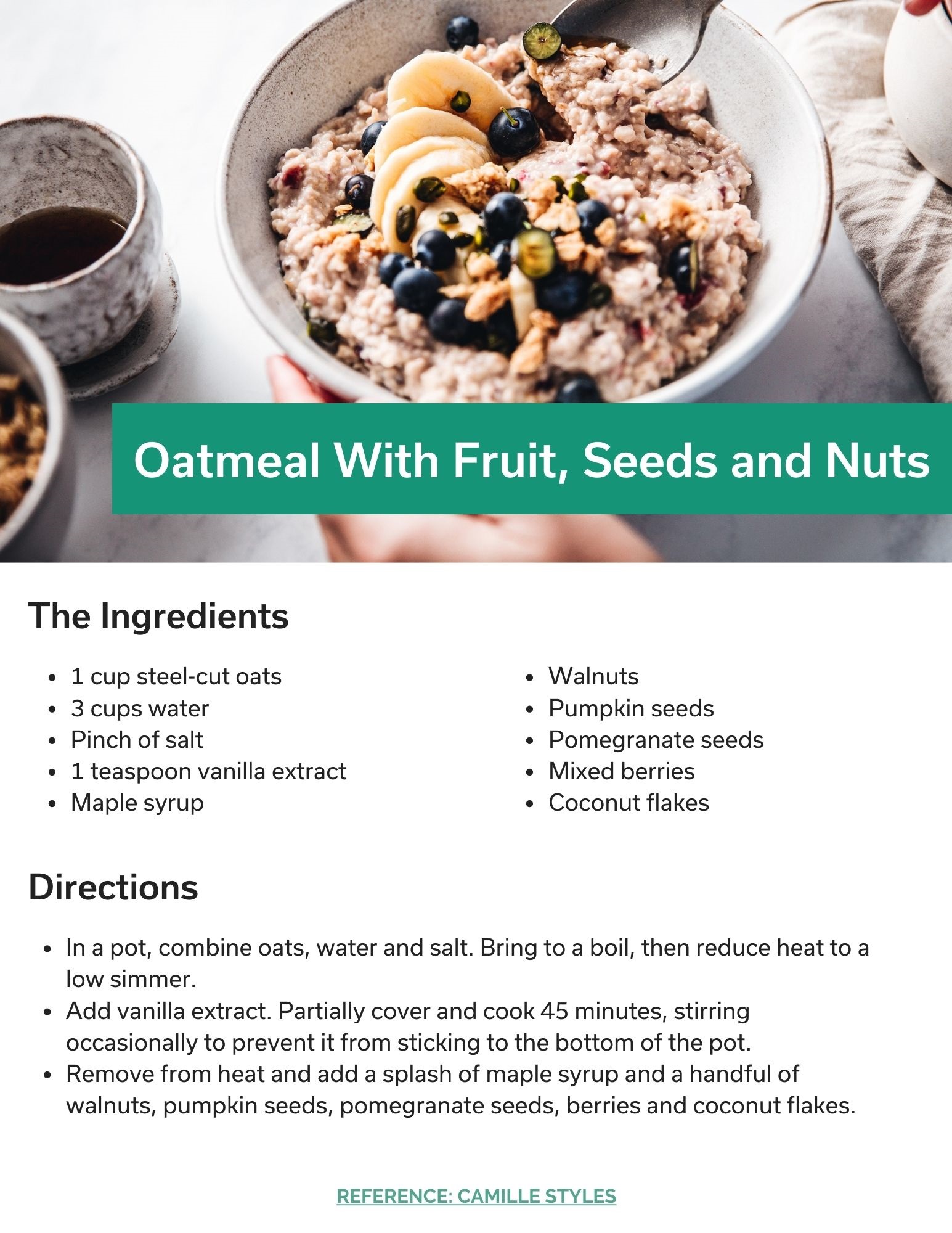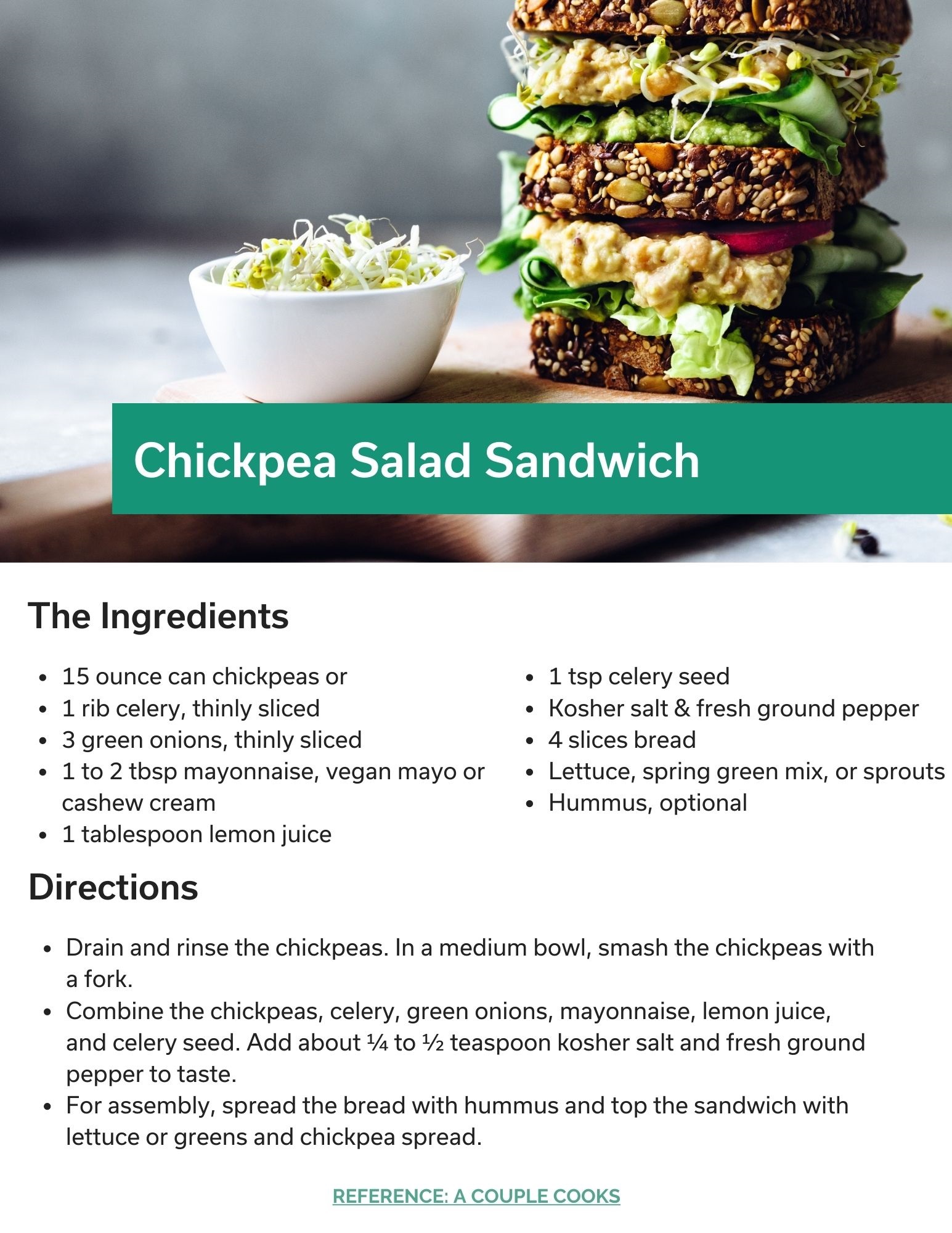Creative Ways to Add More Plants Into Your Diet

Eating plants doesn’t have to be about bland cauliflower or tasteless leafy greens, and there’s more to it than just fruits and vegetables; plant-based foods include nuts, seeds, legumes and grains.
Whatever category they fall under, many Americans don’t eat enough plants. In fact, more than half of the calories consumed in a typical American diet comes from processed foods. Follow along to learn more about the benefits of a plant-based diet and how to add more plants to your daily meals.
Benefits of plant-based diet
Eating more plants is not necessarily a diet as much as it is a lifestyle change. Many people are conditioned to think meat should be at the center of what you eat. The reality is plants boast many health benefits – fiber, healthy fats, vitamins, minerals and even protein – and can be just as filling and satisfying. It ultimately comes down to being creative.
Immune system: Whenever your body identifies germs or other pathogens, the immune system kicks into high gear to fight off infections. Plant-based foods contain important antioxidants, vitamins and minerals needed to support a healthy immune system. Focus on foods high in vitamin C, vitamin D, zinc and beta carotene.
Inflammation: Animal products, such as red meat and other processed foods, have pro-inflammatory properties, meaning they can cause inflammation. Conversely, plant-based foods can reduce inflammation. Some studies show more inflammation can lead to higher cholesterol and other cardiovascular issues. Focus on leafy greens, whole grains and yellow vegetables.
Fiber: Fiber, which can only be found in plants, is beneficial for gut health and to help absorb nutrients. Plants contain two types of fiber: soluble and insoluble fiber. Soluble fiber dissolves in liquids (water or bodily fluids), while insoluble fiber has the opposite effect and absorbs water to help regulate normal bowel movements. Oats and citrus fruits are examples of plants high in soluble fiber. Berries and legumes are examples of plants high in insoluble fiber.
How to eat more vegetables
Use more greens: Sneaking greens into meals isn’t just for children. Leafy greens, such as spinach, kale, arugula and other salad greens, are high in vitamins A, C, E and K. Add them to your eggs in the morning, to your sandwich at lunch or to soups, stews and pastas for dinner.
Add veggies to smoothies: Fruits and smoothies go hand in hand, but where do veggies stand? Beets, cucumber, zucchini and greens are all good ingredients to use in your smoothies. Here is some inspiration to create your own smoothies at home.
Accessorize your sandwiches: Sandwiches with meat and cheese can get boring over time. Liven up your lunch by adding veggies to your creations. And it doesn’t have to be limited to staples such as lettuce, tomato and onion. Opt for a variety of textures to add crunch and flavor. Arugula, olives, cucumber, shredded carrot, bell pepper and spinach are all good options.
Sub veggies for grains: Enriched white pasta and enriched white rice are two starches that don’t provide much nutritional value other than calories and carbs. The same goes for pizza crust made with enriched white flour. Instead, try veggie noodles in place of traditional pasta or a cauliflower crust for your pizza. You can even make homemade veggie noodles at home using zucchini or squash. For rice alternatives, consider cauliflower rice or broccoli rice.
How to eat more fruits
Snack away: Raw vegetables tend to be the go-to snack alternative to chips and dip, but don’t shy away from fruits. Apple sticks, banana slices, grapes, pineapple chunks, berries and melon are all ideal bite-sized options to eat at your desk or on the go.
Sugar-free sauces: Ditch the pancake syrup in the morning and cook down some of your favorite fruits to add as a guilt-free sauce. For example, mix a handful of your favorite berries (strawberries, blackberries, raspberries or blueberries) into a saucepan with a squeeze of a lemon and cook down until it thickens.
Smoothie bowl: Smoothie bowls have become more popular of late as a way to introduce color and extra fruits to your mornings. A smoothie bowl includes a blended base topped with fruits, nuts and seeds. It’s an ideal way to add several types of plants to your diet – not just fruits!
Have fruit for dessert: Fruit is naturally sweet, making it a guilt-free alternative to ice cream or other high-fat treats. Try a bowl of fruit topped with nuts and coconut flakes – you’ll feel better about yourself without the sugar rush.
Cook your fruit: Most people view fruits as strictly a food to be eaten raw. Fruits actually cook up quite well using either dry or moist heat. Braising, steaming or boiler fruits are common ways to use moist heat, while grilling or baking are popular methods using dry heat. In general, apples and stone fruits (peaches, plums, apricots) work best for moist cooking techniques, and pineapples, figs and bananas are best for dry heat.
Plant-based diet for beginners
If you’ve never enjoyed fruits, vegetables or any other type of plant-based foods, then it may be overwhelming to transition to something new.
Start slow and follow this general rule: fill up two-thirds of your plate with plants, with half coming from fruits or veggies. The Centers for Disease Control and Prevention recommends two servings of fruit and two servings of vegetables each day. This doesn’t include starchy or root vegetables such as corn or potatoes. When eating a plant-based diet, your intake will be slightly more than the recommended amount.
Here are some examples of foods to choose:
- Fruits: Apple, bananas, grapes, berries, citrus fruits, stone fruits
- Vegetables: Peppers, spinach, kale, leafy greens, eggplant, zucchini, squash, tomatoes
- Tubers: Sweet potatoes, turnips, celery root, parsnips
- Whole grains: Oats, whole wheat bread, whole wheat pasta, quinoa, brown rice, farro
- Legumes: Beans, lentils
- Healthy fats: Avocado, coconut
- Nuts: Almonds, walnuts, pistachios,
- Seeds: Flax seeds, chia seeds
From a caloric standpoint, around 1,000 calories should be from veggies, whole grains and legumes. These foods are high in fiber and can help you feel full longer throughout the day. While nuts, seeds and healthy fats such as avocado should be consumed in moderation since they are calorie dense.
Don’t be scared off by a perceived lack of protein in your diet. Many people associate protein with animal products. However, plant-based foods can also be a good source of protein. Some examples include soy-based foods such as tofu, lentils, beans, nuts and seeds.
Here are some other tips to incorporate more plants into your diet:
Establish a routine: When meal-planning, try to cook one exclusive plant-based meal per week. This will help reduce your reliance on animal protein.
Mix it up: Cook dishes that are a mix of grains and vegetables. For example, a quinoa bowl combines whole grains (quinoa) with an array of your favorite vegetables.
Salads don’t have to be boring: Try eating a salad with every meal, but don’t just use lettuce and a dressing. Mix it up with toppings and other add-ons. For texture, add walnuts, almonds or a crunchy vegetable such as carrots, celery or bell pepper.
Boost your sauces with vegetables: Making a tomato sauce for your children? Add in as many vegetables as you can. Carrots, celery and bell peppers all blend well with tomatoes and add natural sweetness. For uncooked sauces, add a bunch of spinach or other greens to pesto.
Grill or roast your veggies: It used to be that vegetables were only steamed, boiled or sauteed. Grilled or roasted vegetables add a different flavor and texture, especially when they become slightly charred. Some vegetables, such as tomatoes, sweet potatoes, carrots and bell peppers, have a higher sugar content that creates caramelization when cooked at a high temperature.
Use canned or frozen goods: While fresh is always better, frozen and canned goods can be more affordable and won’t go bad.
Easy plant-based recipes
Here are three easy plant-based recipes to try, including one for each meal – breakfast, lunch and dinner.
Oatmeal with fruit, seeds and nuts
Chickpea salad sandwich
Squash tacos
Visit the INTEGRIS Health For You blog for more lifestyle, wellness and food content.






